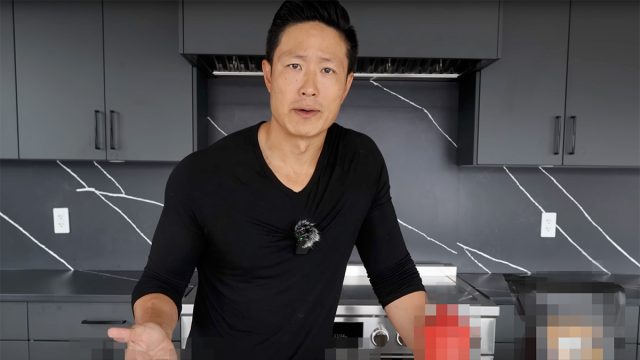Fitness Coach Reveals the 5 Foods That Helped Him Lose 20 Pounds in 90 Days
Looking for a simple way to lose weight without complicated meal plans? Fitness coach Dan Go discovered that focusing on just five specific foods helped him drop 20 pounds in three months. "Eating similar meals every single day is a low key weight loss hack," says Dan, who specializes in helping entrepreneurs transform their bodies. Here's his straightforward approach that anyone can follow.
Dan's Weight Loss Philosophy
"I get way more benefit from doing something almost every day as opposed to figuring out what I'm going to eat on an hour-to-hour basis," Dan shares about his journey. As an entrepreneur, he found that simplifying his food choices was key to sustainable weight loss.
The Lifestyle Change That Made It Possible
"We make about 200 food decisions a day," Dan reveals. His solution? "I'd rather have limited decisions rather than open myself up to the hundreds of decisions that I would make around food." This mindset shift helped him maintain consistency while losing those 20 pounds.
Why These Foods Work: The Three-Factor Framework
Before diving into specific foods, Dan explains his selection criteria: "I look for three key factors when choosing foods for weight loss: nutrient value, satisfaction level, and the protein-to-calorie ratio." This framework ensures you're not just counting calories but getting maximum nutrition and staying full longer.
Your New Best Friend: New York Strip Steak
"Steak is a superfood with the amount of nutrients it contains," Dan emphasizes. A 100-gram serving of strip steak provides 30 grams of protein for just 175 calories, plus essential nutrients like carnitine, zinc, creatine, iron, and B vitamins. Can't afford strip steak? Dan suggests extra lean ground beef as an equally effective alternative.
Power Up with Cruciferous Vegetables
Want to eat more while losing weight? Dan's solution is simple: "I love to volumize my meals with vegetables like broccoli, Brussels sprouts, kale, spinach, and asparagus." These low-calorie powerhouses are packed with fiber and nutrients. Dan particularly favors grilled broccoli for its crunch and impressive nutrient profile, including calcium, iron, phosphorus, and vitamin C.
The Unsung Hero: Chicken Breast
"It's not the flashiest food," Dan admits, "but chicken breast gets the job done." With 31 grams of protein per 100-gram serving at just 165 calories, it's one of the most efficient protein sources available. Dan notes that this budget-friendly option is perfect for those who want flexibility with their remaining daily calories.
RELATED: Coach Lost 49 Pounds at 43 by Removing These 7 Foods From Her Diet
Your Insurance Policy: Whey Protein
While technically not a whole food, whey protein is Dan's secret weapon. "Think of this as protein insurance," he says. A double scoop provides 50 grams of protein for just 120 calories. Dan's pro tip: Add psyllium husk for fiber and satisfaction, plus creatine for additional benefits.
The Freedom Factor: Planned "Free" Meals
"If you can incorporate your favorite foods into your diet, that makes for a way of eating that you can sustain for the long term," Dan explains. He recommends following an 80/20 approach: "80 to 90% of my meals are going to come from whole single ingredient nutrient-dense sources, and 10 to 20% of my calories are going to come from whatever I want."
Dan's Simple Success Strategy
"I like to call this kind of like the Steve Jobs turtleneck of dieting," Dan says of his approach. "You have your flexibility with the free foods that allow you to have some fun, but 80 to 90% of the time, you're basically wearing a black turtleneck with jeans." This simple but effective strategy helped him lose 20 pounds while maintaining his busy entrepreneurial lifestyle.
RELATED: 9 Things You Need to Do to Drop Body Fat in 30 Days, According to Expert
Putting It All Together: Your Action Plan
Dan's approach is refreshingly simple: "I created about five to seven meals that I had on rotation." This eliminates decision fatigue and ensures consistency. By limiting your daily food decisions, you can focus your mental energy on what really matters while still getting results. And if you enjoyed this article, take advantage of these 15 Quick Ways to Lose Body Fat Percentage in a Week.





